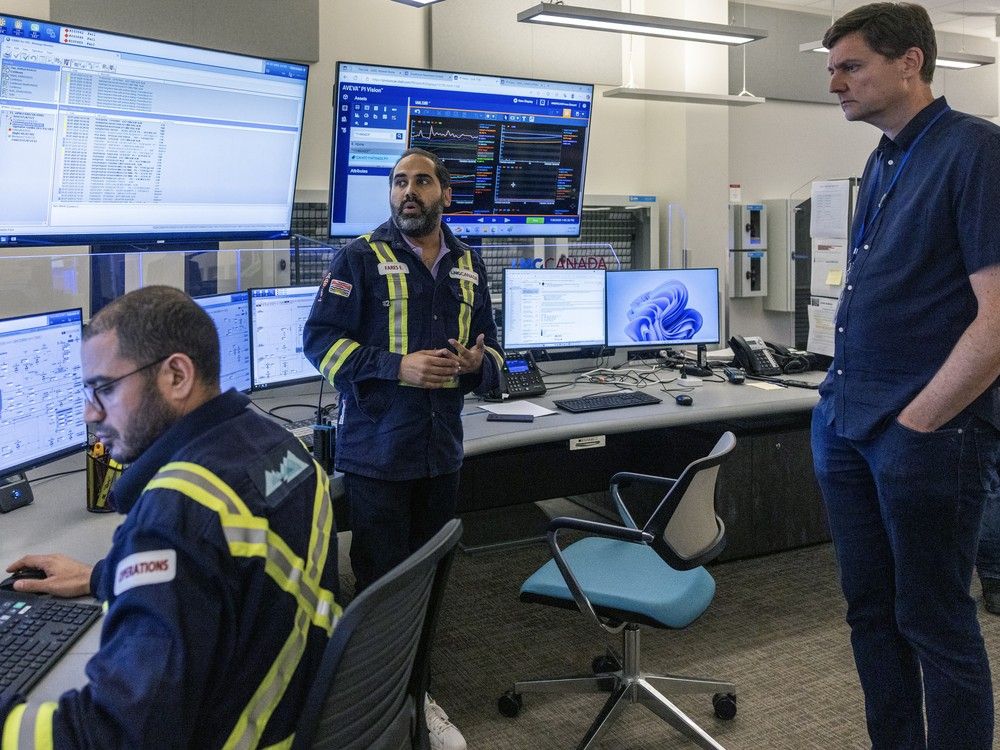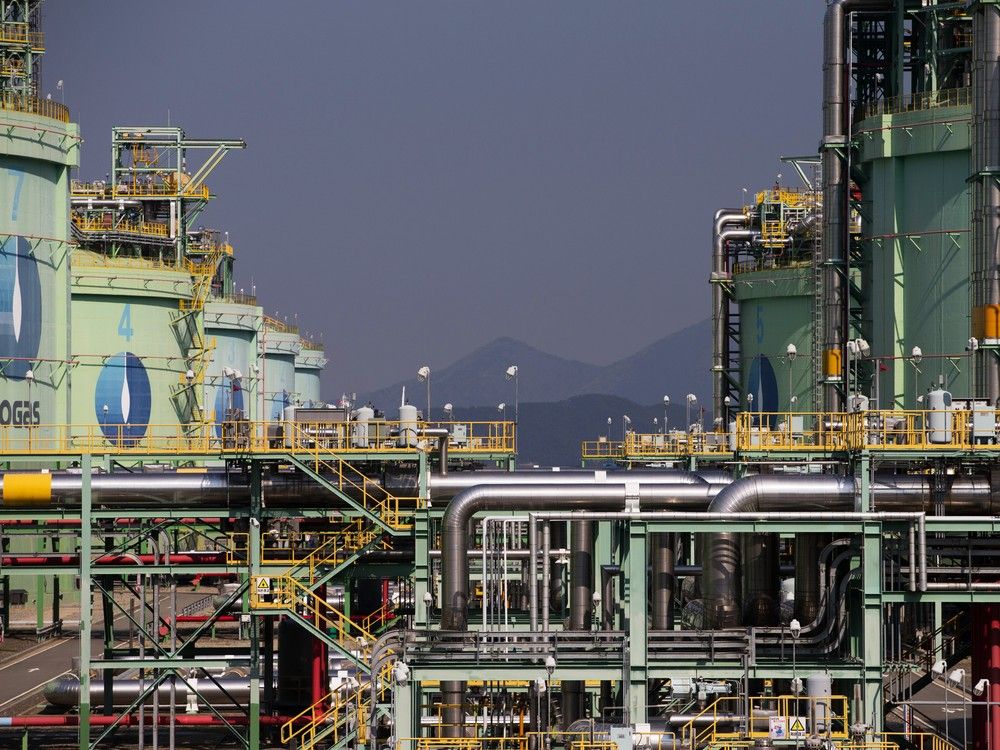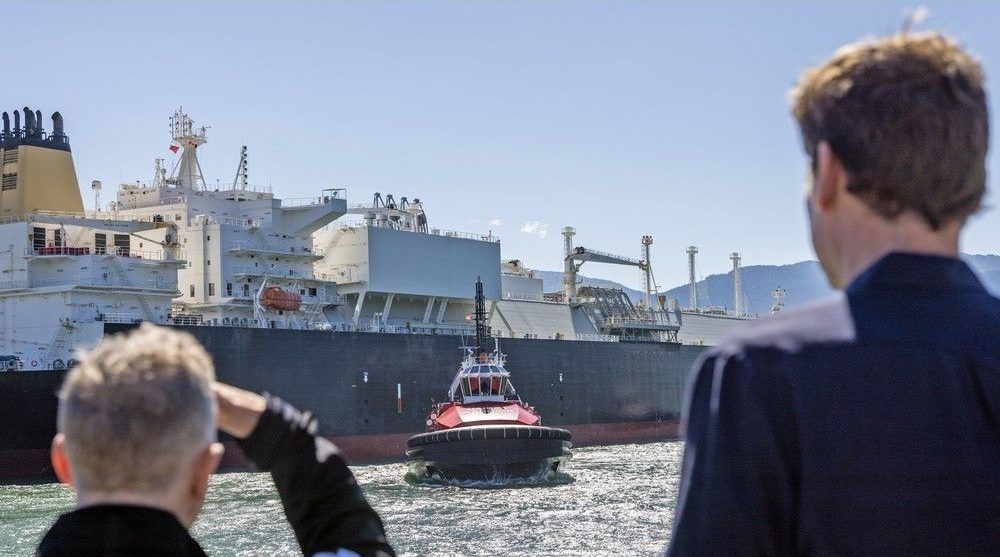
At the same time Premier David Eby was touting B.C.’s potential to export liquefied natural gas to Asia, U.S. President Donald Trump was unveiling his county’s trade framework agreement with South Korea, which included a commitment to purchase US$100 billion of American LNG.
Tying energy to easing up on tariff threats has become a common theme in Trump’s attempt to reorder the U.S. trading landscape, either with purchase commitments or contributions to American energy infrastructure, an element in a framework reached with Japan.
Such agreements create a “shifting landscape” for the LNG market that Canada will have to navigate with partners apparently willing to pay premiums for American energy in exchange for their “strategic partnership” with the U.S., said University of B.C. trade economist Werner Antweiler.
Eby’s Asia trade mission, mere weeks before the U.S. deals were announced, sought to cultivate B.C.’s trade relationship with both countries, and he left sounding assured about the province’s potential.
Eby spoke about meetings B.C. representatives had with LNG Canada’s key partners: the Korean gas utility KOGAS, Mitsubishi in Japan and Malaysia’s Petronas, where executives “underlined how important it was to them that this project was able to be reliable.”
However, Antweiler, chair in international trade policy at UBC’s Sauder School of Business, noted that the U.S. is also willing to “simply use their influence to bully trade partners into beneficial trade deals on energy.

“Some have called it a protection racket,” Antweiler said. “Korea buys U.S. energy at a premium or preferentially, and in turn U.S. provides military protection, rather than for the U.S.’s own geostrategic benefit.”
LNG’s buyers — major utility firms — purchase fuel on long-term contracts and Antweiler said it is likely the South Korea deal will result in a “reshuffling market share,” with new U.S. imports replacing its expiring contracts with Qatari LNG suppliers.
“Their overall demand for LNG is not increasing much and is down from a peak in 2021,” Antweiler said. In rough estimate, he estimated it could increase the U.S. share of South Korea’s market to about one third from five per cent now.
In the case of Japan, the notice from Trump’s White House dated July 23, said the sides are “exploring a new offtake agreement for Alaskan LNG,” with a proposal that is in its early stages, but which is vying for the same market share as B.C.
“Japan’s commitment to Alaskan LNG may be looked at through the perspective of energy security too,” Antweiler said.

Energy Minister Adrian Dix argued that the LNG projects in the works “have real advantages over other projects, say the Alaska project, and everything else.”
“Obviously we only control what we control, the provincial and the federal government,” Dix said. However, he added that the provincial and federal governments are “working closely” with LNG Canada related to the company’s yet-to-be approved Phase 2.
LNG Canada, a consortium of five partners including Shell, Malaysian state-owned Petronas, PetroChina, Mitsubishi Corp. and KOGAS, is contemplating a $30-billion addition to its Kitimat plant that would nearly double its capacity to 26 million tonnes of LNG per year from 14 million tonnes per year now.
A spokesperson for LNG Canada said the company itself isn’t involved in sales: its joint-venture partners determine where the product is delivered and sold.
Dix, however, said “we feel that our (LNG Canada Phase 2) is a really outstanding project and we’re optimistic about it. But at the same time, it’s not entirely our decision. It is a reason why you want to settle all the issues so that the sooner they move forward, the better it is for B.C. and for everybody.”
Dix added that before now, B.C. didn’t have the option of offshore exports for natural gas, the province’s biggest export commodity, worth $16 billion in trade in 2024. And the U.S. trade deals underline the importance for B.C. to diversify.
“If you ask me, do I worry? I worry every day about everything,” Dix said. “Because there’s a lot at stake for B.C. and we’ve got to continue to meet our economic goals, we’ve got to continue to create more wealth and energy sovereignty.”
Antweiler said Canada might need to turn to “countries that are not constrained by trade deals with the United States.”
“It’s all a matter of reshuffling trade directions, but in the end the LNG market is global,” he added. “World supply and world demand must be clear, no matter what the U.S. does.”